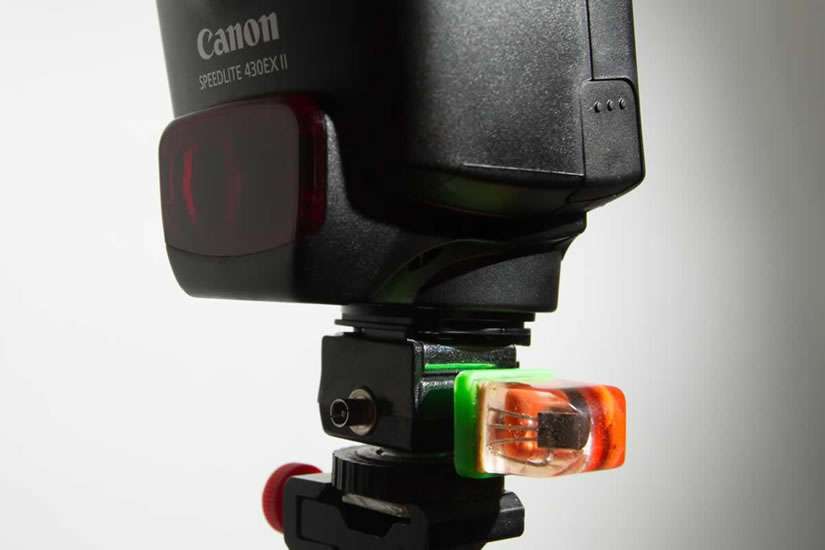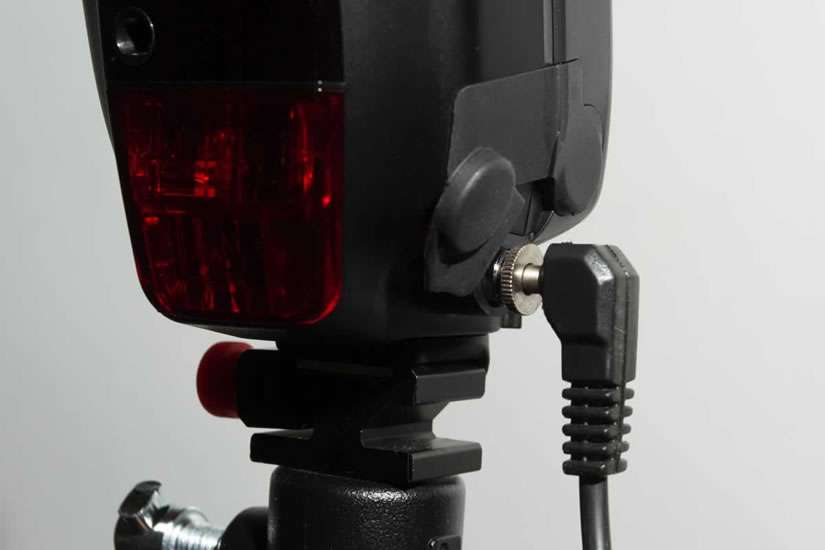In the ever-evolving world of photography, certain lighting gear has gradually faded from use, a couple of examples: the optical sync slave attachment and the PC cord/cable for flash sync. These tools have been overshadowed by advancements in flash technology and wireless connectivity.

Optical Sync Device
Let’s start with the optical sync slave attachment. About 10-15 years ago, this device was indispensable for photographers using flash units that didn’t have built-in optical sync capabilities. This gadget could trigger a connected flash to fire when it detected another flash firing. These days, both speedlights and strobes now commonly feature S1 and S2 mode flash sync.
So, what are S1 and S2 modes?
S1 mode triggers the flash to fire when detecting the first flash burst it sees, making it a good choice for manual flash units or when otherwise not using TTL. The S2 mode is designed for TTL flash mode, delaying the flash firing until it detects the main flash burst, ignoring any pre-flash for metering purposes. So, all of this renders the optical sync slave attachment largely unnecessary in today’s photography setups.

PC Cord/Cable
As for the PC cord/cable for flash sync, its limitations are pretty obvious. It served as a reliable method for syncing flash units to the camera in the past, but it’s prone to several drawbacks. For one, it’s a physical cord, posing a tripping hazard and restricting movement during shoots. For another, its range is limited, and that limits where you can position the flash unit. Also, the PC cord is susceptible to becoming loose, potentially disrupting the connection between the camera and flash unit mid-shoot. There are locking types which are more secure, but not every flash and sync adapter have this feature. And of course, only manual flash with these, no TTL.
Modern wireless flash triggering systems are more convenient and reliable than these older methods of flash sync. These days we use radio transmitters and receivers to make that communication between camera and flash. These systems offer greater freedom of movement and flexibility in positioning the flash units without the constraints of cords or cables. And they provide more robust and stable connections, reducing the risk of misfires or disconnections during critical moments of the shoot.
Loved this tip? Here's something else you might like:
👉 Free 10-Min. Guide to Off-Camera Flash


